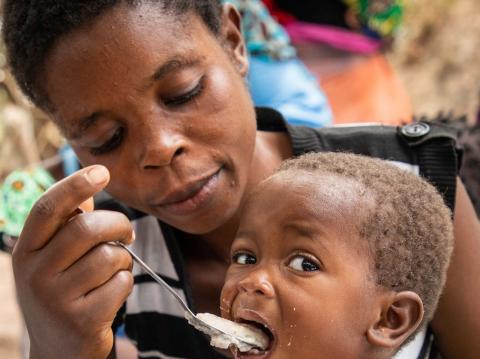Global resilience report
This is a summary of the following report: UNICEF, World Food Programme, Standing Together for Nutrition et al (2024) Global resilience report: Safeguarding the nutrition of vulnerable children, women, families and communities in the context of polycrisis. https://micronutrientforum.org/wp-content/uploads/2024/05/Global-resilience-report-FINAL.pdf
Recently, the world has experienced a devastating combination of factors – a ‘polycrisis’ – that is deepening food and nutrition insecurity. The knock-on effects of the COVID-19 pandemic, climatic and economic crises, and new and protracted conflicts are all contributing. However, despite challenges, many governments have demonstrated notable capacity to safeguard their most vulnerable populations. These case studies provide lessons for government policymakers and funders to prepare for ongoing and future crises.
The number of acutely malnourished (wasted) children, and the number of people who are moderately or severely food insecure, has risen sharply and still remains above pre-pandemic levels. Wasting among children, adolescent girls, and women increased by 20–25% between 2020 and 2022 in the countries most affected by the global food and nutrition crisis. Women were disproportionately affected, as the food insecurity gender gap increased by 2.5 times. An estimated 47 million additional women and girls fell into poverty.
Beyond the direct health and economic impacts on individuals and families, these crises disrupt the already fragile systems – food, health, education, water and sanitation, and social protection – that support access to nutritious foods, essential nutrition services, and positive feeding and care practices for children and women.
However, policy lessons can be learned from the positive impacts that were observed when some governments purposively invested in strengthening systems that support nutrition. Adopting flexible delivery platforms for essential nutrition services, prioritising support for the most vulnerable, and adapting and scaling social protection programmes are examples of this. Governments also strengthened communities’ capacity, engagement, and empowerment, recognising them as the ‘first responders’ in a crisis and as essential contributors to safeguarding nutrition. The use of innovative digital technologies and strong coordination platforms also enabled systems to better adapt in the face of crisis. The detailed findings from this report are beyond the scope of this summary. However, based on lessons learned, the report does offer several policy and programme actions to strengthen the nutrition resilience of systems, before, during, and after a crisis:
First, put in place policies and programmes that enable all systems to be adaptive, absorptive, and transformative in the face of future shocks and crises. Second, increase the resilience capacity of key systems to maximise the prevention of malnutrition in countries most vulnerable to polycrisis. Third, strengthen the predictability and flexibility of funding to enable the building of stronger and more resilient systems. Fourth, strengthen the capacity, engagement, and empowerment of communities as participants and contributors to the nutrition resilience of systems. Fifth, strengthen data collection and build robust information systems to better target vulnerable households.


